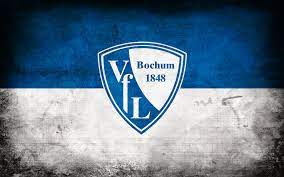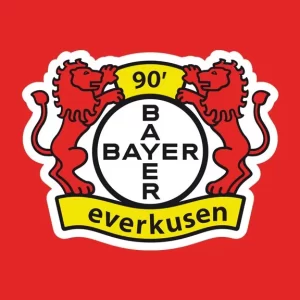Arsenal Football Club, one of the most renowned and storied football clubs in England, boasts a rich history that has captivated fans and players alike. Founded in 1886, the club has transcended the realms of sport, etched its name in the annals of football history, and constructed an unwavering legacy synonymous with passion, excellence, and sporting brilliance. As we journey through time, we will explore the myriad stories, triumphs, challenges, and transformations U 888 that have sculpted Arsenal Football Club into the powerhouse it is today.
The Formation and Early Years of Arsenal Football Club
The foundation of Arsenal Football Club can be traced back to 1886, when a group of workers at the Royal Arsenal armaments factory in Woolwich decided to form a football team. This initiative was primarily aimed at fostering camaraderie among the workers after hours of labor. What began as a small gathering of passionate individuals quickly morphed into something much larger, laying the groundwork for what would become a legendary football institution.
The Birth of the Club Arsenal Football Club
In the late 19th century, football was beginning to take shape as a distinct and organized sport. The formation of Arsenal Football Club came at a time when many clubs were rising across England, but none had the unique background that Arsenal did. The original name of the club was Dial Square, named after the location of their first match, which took place on December 11, 1886.
With a modest start, Dial Square played a friendly match against Eastern Wanderers, securing a 6-0 victory. This overwhelming success laid the foundation for further matches and attracted more local players. In 1887, the club adopted the name “Royal Arsenal,” reflecting its deep-rooted ties to the military establishment.
In 1891, Royal Arsenal turned professional, marking a significant milestone in the club’s evolution. This transition allowed the club to attract better players and compete in higher-stakes matches, ultimately leading to their entry into the Southern League. Their early years were marked by gradual growth, with the club engaging both in regional leagues and cup competitions.
Transition to Arsenal FC Arsenal Football Club
By the turn of the century, Royal Arsenal was finally ready to rebrand itself as Arsenal Football Club, aiming for a broader appeal beyond just the local community. This pivotal change happened in 1913 when they moved from Woolwich to Highbury in North London, paving the way for future successes. The new stadium allowed Arsenal to capitalize on a larger fanbase and subsequently increased their revenue potential.
Highbury became the home ground of Arsenal and was instrumental in developing an identity for the club. The move also signified a commitment to full-time professionalism, and the club started investing heavily in talented players, coaches, and infrastructure.
As Arsenal Football Club transitioned into the early 20th century, they began to establish themselves as one of London’s premier teams, setting the table for future triumphs.
Early Successes
Despite facing stiff competition, Arsenal recorded their first major trophy in 1908 by winning the FA Cup. This achievement triggered a wave of optimism and ambition within the club, and it was only the beginning of a golden era.
Over the following years, Arsenal continued to build a competitive squad, attracting talented players who would go on to become club legends. The appointment of manager Herbert Chapman in 1925 marked a transformative period for the club, as he revolutionized training methods, tactics, and player recruitment.
Chapman’s influence led to unprecedented successes in the late 1920s and early 1930s. Under his stewardship, Arsenal secured two league titles and an additional FA Cup, establishing themselves as a dominant force in English football.
The Golden Era: Arsenal Football Club in the 1930s
The 1930s are often regarded as the golden era for Arsenal Football Club, a time when the club not only dominated English football but also left an indelible mark on the international stage. During this period, Arsenal established a tradition of excellence, bolstered by innovative management and a formidable squad.
Herbert Chapman’s Influence
Herbert Chapman’s arrival at Arsenal Football Club was a watershed moment in the club’s history. His managerial prowess, tactical insights, and visionary approach transformed Arsenal into a well-oiled footballing machine. Chapman introduced revolutionary changes to training regimens, instilled a focus on professionalism, and emphasized the importance of teamwork.
Chapman is credited with implementing the famous WM formation, which fundamentally changed how football was played. This tactical innovation allowed Arsenal to maximize their attacking potential while ensuring defensive stability. The results were evident on the pitch as Arsenal racked up victories and titles under Chapman’s guidance.
In addition to his tactical innovations, Chapman recognized the significance of marketing the club. He understood that football was not just a sport; it was a business. By enhancing the club’s image and promoting its achievements, Chapman elevated Arsenal’s profile not just locally but internationally.
Triumphs on the Pitch
The success of Arsenal Football Club during the 1930s was nothing short of remarkable. The club won five league titles and two FA Cups in a span of just seven years. The crowning achievement came in 1933 when Arsenal became the first club to win the FA Cup in a record-breaking manner by defeating Sheffield Wednesday 3-0 in the final.
At the heart of this success was a team laden with talent. Legendary players such as Cliff Bastin, Ted Drake, and Alex James showcased their skills and contributed to Arsenal’s dominance. Each player brought their unique flair, creating a cohesive unit that struck fear into opponents.
The team’s resilience and determination were evident throughout their campaigns, with many memorable matches defining this era. Arsenal’s ability to bounce back from setbacks and maintain consistency set them apart as a formidable force in English football.
The Legacy of the 1930s
As the 1930s drew to a close, Arsenal Football Club had firmly established itself as a powerhouse in English football. The legacy of this golden era extended far beyond mere titles; it reshaped the identity of the club and laid the foundation for future generations.
The tactics, professionalism, and focus on community engagement initiated by Chapman reverberated through the club’s culture. Arsenal became a symbol of hope and pride for the local community, fostering a passionate fanbase that would support the team through thick and thin.
The impact of the 1930s is still felt today, as the values championed during that decade continue to guide the club’s philosophies. Arsenal Football Club remains committed to playing attractive football, nurturing young talent, and maintaining a strong connection with its supporters.





